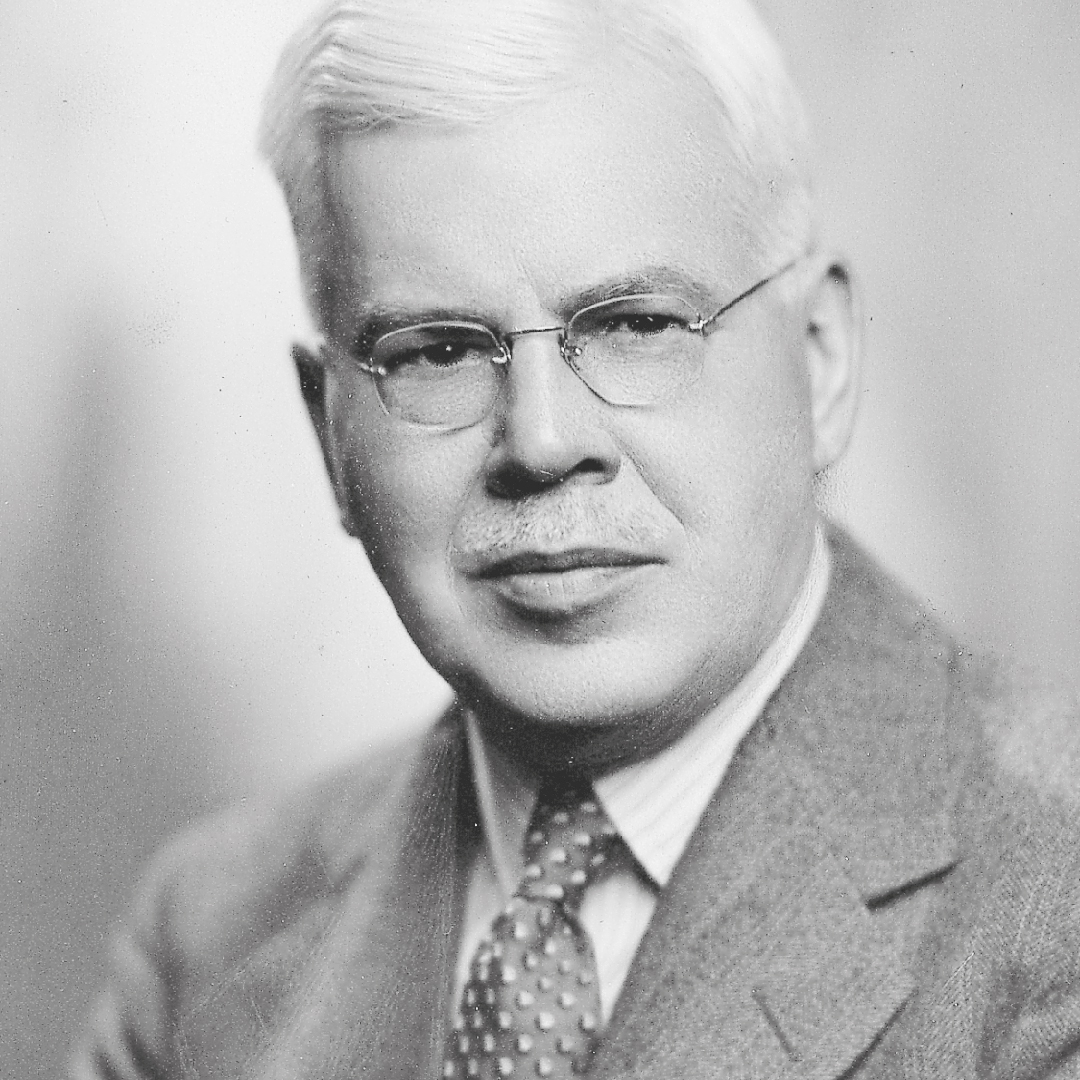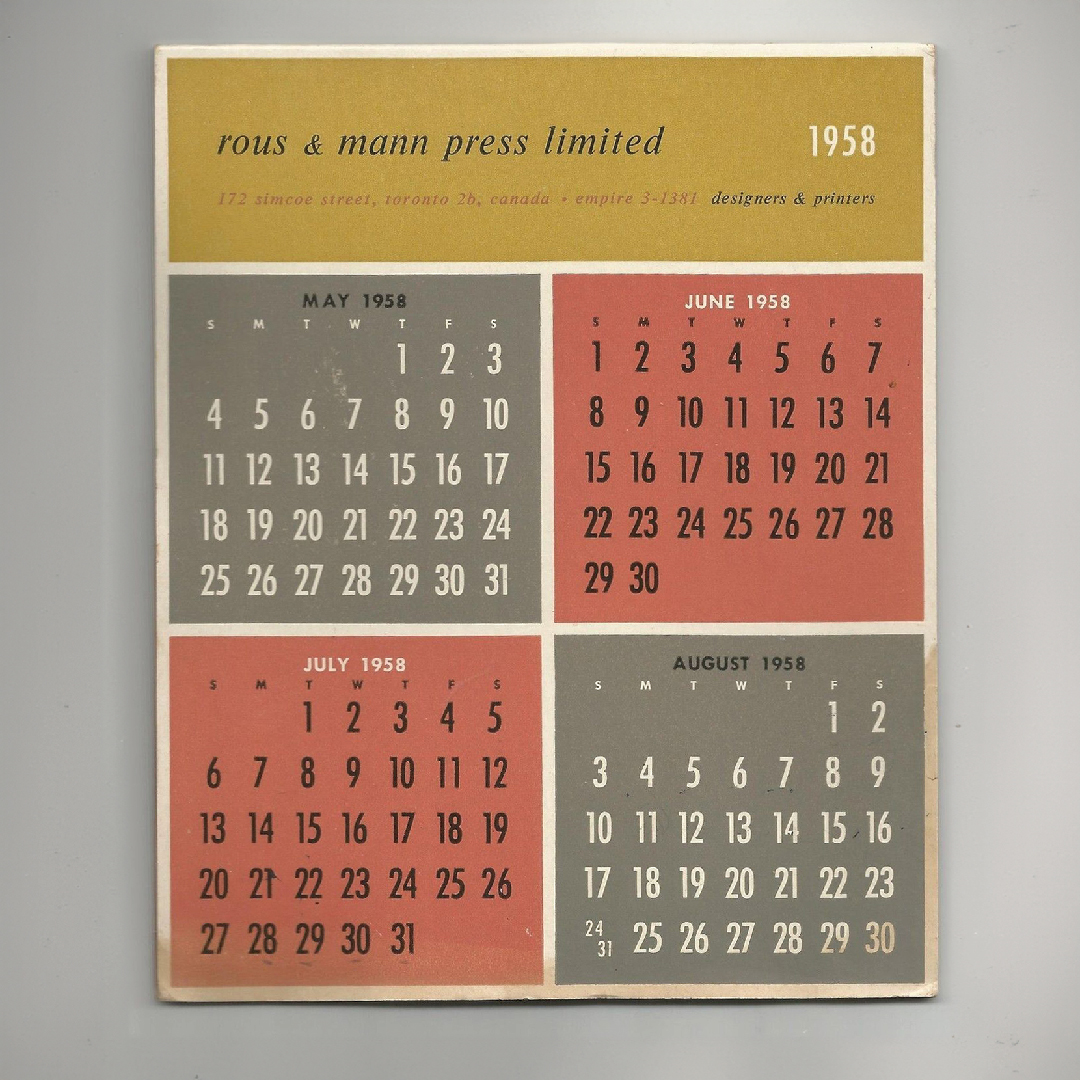

H.L. Rous was born in Belleville, Ontario in 1879. He was the fourth child of Frederic Rous and Ruth Maria Mallory. His Quaker father put a high value on books and education. Frederic Rous (1848–1888) wanted his five boys not only to learn a trade but to have a university education. Unfortunately he died in 1888 at the age of forty, leaving his wife with six children. Only the youngest son, Colin Constable Rous (1884–1970), received the university education that his father had planned, and only after he had worked for many years.
All of the Rous boys went to work as soon as they were able. Laurence Rous entered the printing plant of the Belleville Intelligence, owned by Sir Mackenzie Bowell, where he learned his trade in the job printing department. He studied at the Ontario Business College at night and gained a sound knowledge of business practice. After five years of apprenticeship and training in Belleville, H.L. Rous came to Toronto in 1901 and joined the firm of W.J. Gage as invoice clerk in the shipping department at $4.00 a week. His weekly expenses of $1.00 for room and $2.50 for board soon forced him to move to a better-paying job at Davis and Henderson Stationers. By 1902, however, he had left Davis and Henderson and joined the Mail Job Printing Company, which was owned by Southam’s. After some years as a traveller, H.L. Rous became sales manager in 1907. He left the Mail Job Printing Company in 1909 with his fellow employee F.J. Mann, to found Rous and Mann Limited. In the first years of the new firm, H.L. Rous was in charge of purchasing and supervised the factory machinery operations and technical work of laying out jobs for the factory, in addition to his duties as president and director. In April 1915, he joined the Canadian Army Service Corps as lieutenant and was posted overseas. He was discharged in March 1919 with the rank of captain.
As the years passed and Rous and Mann Limited became well known for the excellence of its printing, the name of H.L. Rous became synonymous with quality. C.A.G. Matthews called him “Mr Perfection,” and the title was apt. On one occasion, 25,000 four-colour booklets were scrapped before the client saw them because they did not meet the Rous and Mann standard. H.L. Rous considered printing to be an art as well as a craft, as did the European printers whom he greatly admired. For him, every printed piece began as an art problem to be considered in terms of form, colour and design. Only when these matters were settled was the job handed over to his printing craftsmen to carry out. H.L. Rous was a stern taskmaster but his compositors, pressmen and binderymen took great pride in the work they did and in the reputation that they had helped the firm establish. They consistently produced work of the highest standards.
H.L. Rous brought an awareness of fine printing to the printing industry as a whole. Many of the men in positions of responsibility in rival firms today are graduates of his “school.” As president of the Toronto Typothetae, the forerunner of the Society of Graphic Arts, he arranged in 1930–31 for a series of twelve lectures on “Art as Applied to Typography” to be given to a special class of employees from member firms of the society, and, later, published the lectures in book form. In 1953, H.L. Rous was awarded the Association of Canadian Advertisers’ silver medal for outstanding service in the graphic arts.
In the 1950s, he sponsored lectures on typography at the Central Technical School and at the Ontario College of Art, of which he was the chairman of the board on two occasions. The three series of H.L. Rous lectures, “Design in Typography,” given at the Ontario College of Art from 1957 to 1960, were published by the Provincial Paper Company in Provincial’s Paper as “The Measure of Typography” (in two parts) and as “Art in the Graphic Arts.” To encourage interest in good printing, H.L. Rous also awarded prizes for design in typography in the various colleges of art with which he was associated. One such competition, held just six months before he died in 1964, was for students of the Jamaica School of Arts and Crafts, where his friend, Carl Dair, was then teaching. H.L. Rous was a member of the UTA Committee on Better Training for Canada and the United States and, in November 1960, was invited to become the first Honorary Fellow of the Society of Typographic Designers of Canada. In his letter of invitation, the president, Frank Newfeld, described this type of membership as being for someone “who by his accomplishment or influence has made a major contribution to typography.”
Printing was both a hobby and his work for H.L. Rous, and he delighted in sharing his knowledge with anyone who was keen to learn. H.L. Rous retired from Rous and Mann Press Limited in 1954 but continued to use a small office in the Rous and Mann Building, as a partner in Rous and Mann Properties Limited, until the business was turned over entirely to the new directors in 1959. He died in Toronto on 1 December 1964 at the age of eighty-five.
— Joyce K. Sowby (nee. Rous)